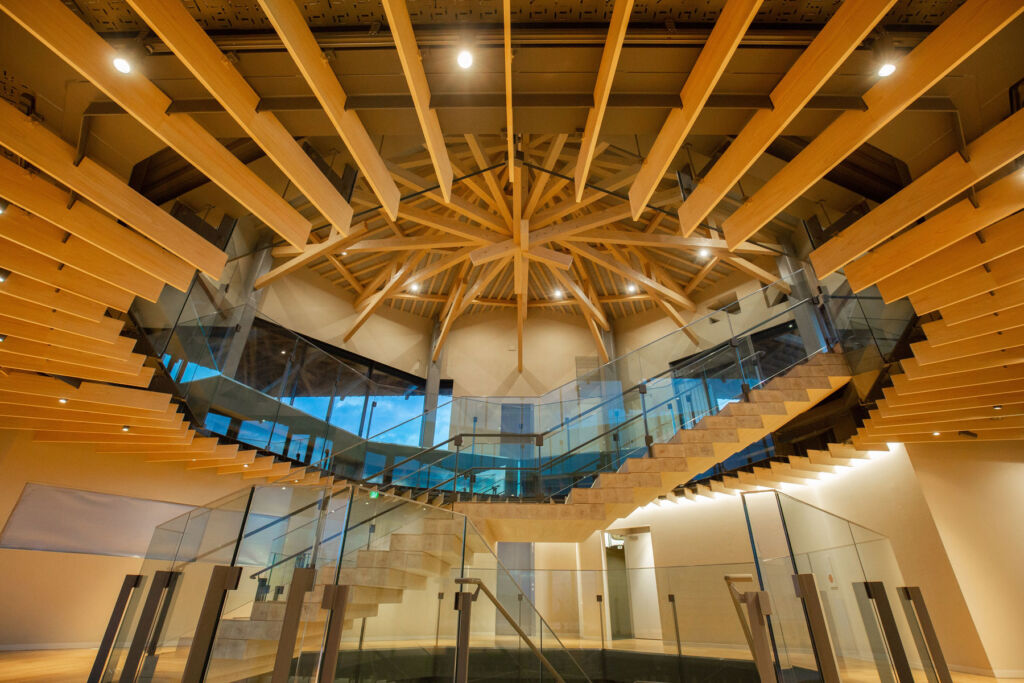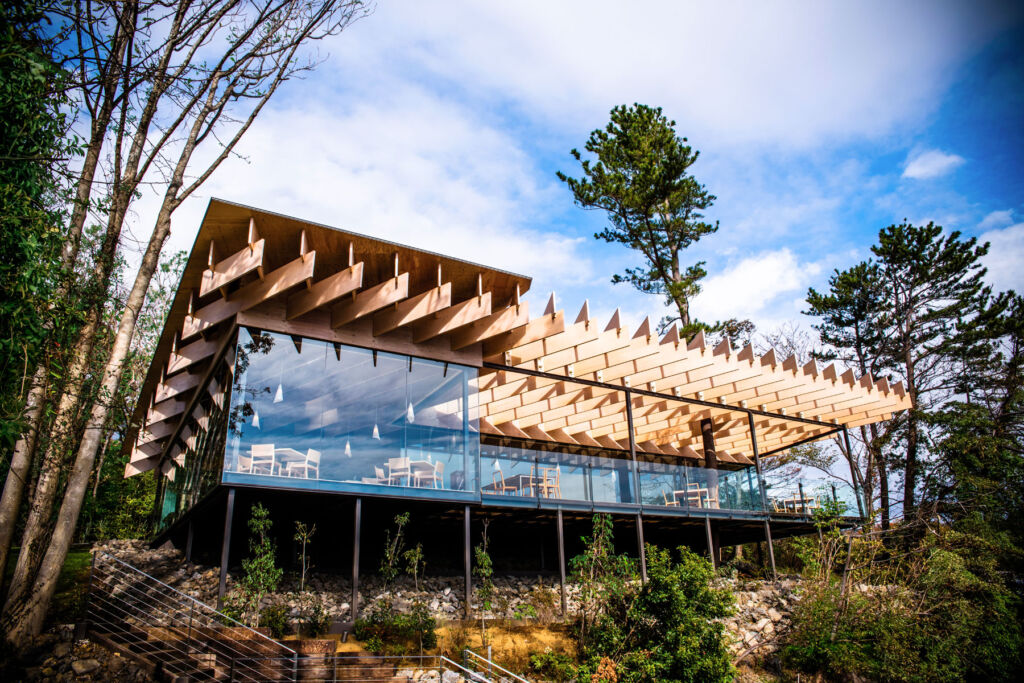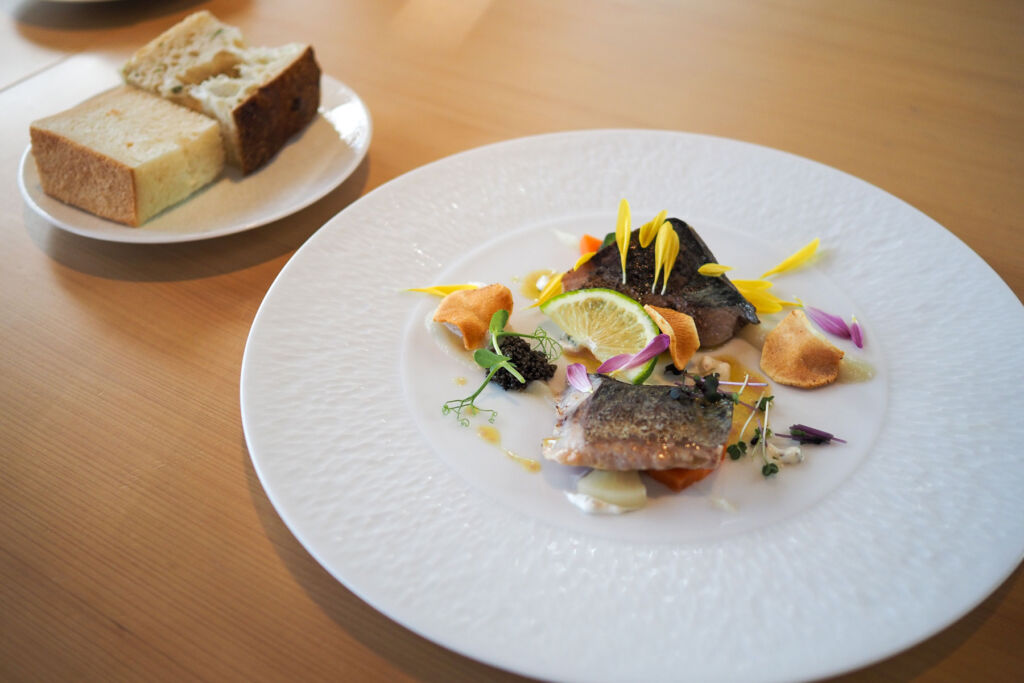

The prefecture of Shizuoka, home to the iconic Mount Fuji and located just one hour from Tokyo by bullet train, boasts an array of impressive architectural landmarks by famous Japanese architects, perfect for travellers with a keen interest in design.
Below are some of the best works, from ryokans and restaurants to museums and lookout spots for a design-led travel itinerary.
Restaurant: Mikuni Izukogen


Enjoying a clifftop location in the beautiful Izu Peninsula overlooking Sagami Bay, travellers will find the Mediterranean fine dining restaurant Mikuni Izukogen. Architect Kengo Kuma, the design mind behind London’s Michelin-starred Endo Sushi Restaurant, and chef Kiyomi Mikuni combined their talents to create a building that reflects the sea, sun and land of the Izu Peninsula.


The building adapts to the area’s topography and is built on a floating wooden structure with floor-to-ceiling glass windows, perfect for enjoying a delicious meal of locally sourced produce while taking in the view of the magnificent bay below.
Ryokan inn: Sanyo-so
Also in the Izu Peninsula, nestled in quiet mountains, is Sanyo-so, a ryokan-style inn originally built in 1929, which served as the second home of Hisaya Iwasaki, son of the Mitsubishi conglomerate’s founder.
It was in 1947 that it began its operation as an inn, and it has grown from 15 buildings back then to 37 today. The additional buildings were designed by Togo Murano, who was 90 years old at the time and had a career spanning more than 60 years. To maximise the natural geological formations of the area, despite being flat houses, the buildings have a unique design incorporating stairs and corridors connecting the guest houses.
Other facilities include a 9,900 square metre garden, a restaurant serving Japanese cuisine using seasonal products from the area and an onsen. Overnight stays start from £150 per person, including breakfast and dinner.
Museum: Mount Fuji World Heritage Centre, Shizuoka
To discover the culture around Japan’s most iconic sight, a visit to the town of Fujinomiya – in the foothills of Mount Fuji – is a must. Here visitors will find Mount Fuji World Heritage Centre, Shizuoka (main image), a creation of Shigeru Ban, who introduced cardboard tubes – particularly recycled into building construction.
It was designed to pay homage to the mountain and the renowned 17th-century Sengen Taisha Shrine, the traditional starting point for climbers. Made with delicately assembled Fuji cypress wood, the building is distinguished by its unique, inverted conical form that looks like Mount Fuji turned upside down.
Visitors can learn about Mount Fuji’s artistry, its beliefs’ history, and its origins as a volcano while simulating a climb up the mountain. Entry costs from ¥300 per adult (approx. £2).
Lookout facility: Nihondaira Yume Terrace
At 307 metres above sea level in the Nihondaira hills, a famous scenic spot overlooking Mount Fuji (Japan’s tallest mountain) and Suruga Bay (Japan’s deepest bay), is Nihondaira Yume Terrace, a lookout facility boasting panoramic views of the area.
The octagonal facility was designed by Kengo Kuma – who also designed the National Stadium and one of the main venues for the 2020 Tokyo Olympics. The building’s construction uses local cypress wood and resembles a tree branch with a forest-like interior.
The first floor is an exhibition area for visitors to learn about the area’s history, a lounge space in the second to relax and enjoy the stunning views, and the third floor is the observation floor with a 200-metre outdoor walking corridor.
Entry to the facility is free. And for visitors planning to visit between January and May, it is harvest season at the many strawberry farms in the area.
Museum: Kannami Buddha Statues Museum
In the northern part of the Izu Peninsula, travellers will find Kannami Town, home to the Kannami Buddha Statues Museum by Akira Kuryu, an architect known for designing a number of museums throughout Japan. The museum houses a group of 24 Buddhist statues, including those from the Heian and Kamakura periods, once known as guardians of the town.
The statues were previously located in public areas and later at the Kuwahara Yakushido Hall, a place of solace for the locals for many years. The statues are now on permanent display at the museum, which Akira designed to look like a temple with pavilion-style roofs to encompass the statues’ spiritual value. Tickets start from ¥300 per person (approx.
Above is only a selection of the incredible architecture Shizuoka has to offer visitors; click here to read about others.
Thank you to Tourism Shizuoka Japan for supplying the images of the buildings.
Read more travel guides, news and reviews here.
